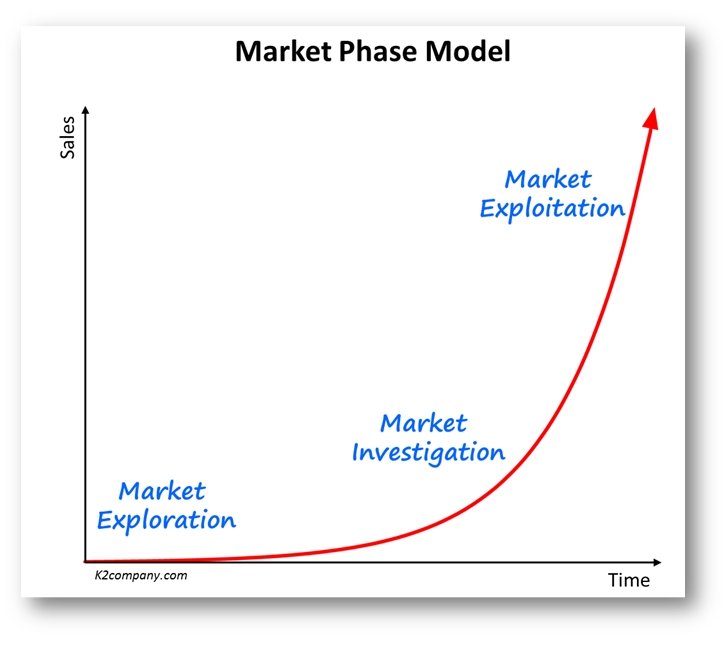I’ve worked with a lot of early-stage startups, trying to help them get to traction and growth. In evaluating different strategies and tactics, over time I’ve evolved a framework that’s been very useful in clarifying why a certain path feels right. This isn’t unique or brilliant, but it’s definitely helped me.
The key question I have usually been focused on is, “How do we unlock the potential of this market?” Embedded in this is the belief that one doesn’t create a market. Instead, a company finds some unmet need and, if it is lucky, can release the potential embedded in the market. The iPod and iTunes are a great example. Sure, Apple “created” a market for easy MP3 players and digital music. But really what they did was to unlock the potential in that market with the right combination of product, service, and marketing.
Let’s say you have a vision of a market potential. What’s your strategy for unlocking that market? Well, there’s a term for that, and it’s called your “Go To Market Strategy.”
Go To Market (GTM) Strategy
How you plan to bring your products or services to your customers and how that changes over time.
The key thing about a Go To Market strategy is that it changes over time. So when you think about your GTM strategy, the first question is, “Where are you in the lifecycle of your market?”
Let’s say you are an enterprise startup and you just raised $1m. It’s time to ramp up, right? Build out your website, hire a sales guy, and go for it. Hell, you probably put pretty aggressive numbers in your plan to investors, so you’re now on the hook. And that’s what the money is for, isn’t it?
Maybe, but maybe not. The right Go To Market strategy is completely dependent on what phase your market is in.
Here is a simple model that really helps clarify how to think about your market. All successful startups will start with no sales, get to a phase where sales start to increase gradually, and then hit a phase where they start to grow rapidly (what I call “Market Exploitation,” which is good, and not to be confused with “customer exploitation,” which is bad).
Obvious Point #1
While we all care about Market Exploitation, you’ll never get there if you don’t pass through the preceding two phases.
Yes, this is obvious. But it’s also really easy to overlook since many early entrepreneurs don’t understand how hard the first two phases are. When we built the business plan for InsideCrowd (my wildly unsuccessful startup), we had many truly insightful ideas about how to solve the challenges of scale confronting our market. And yet we then spent the next three years ignoring those topics almost completely and spending all our time trying to unlock the market in Market Investigation.
Obvious Point #2
The goals, and hence the tactics, that you need to pursue are highly dependent upon the phase your market is in.
Let’s look at these specifically:
| Market Exploration | Market Investigation | Market Exploitation | |
|---|---|---|---|
| Goals | Find the customer | Learn how to sell Get to product/market fit |
Exploit the market opportunity & grow |
| Optimize | Testing, learning, reacting | Depth in your market | Efficiency & growth |
| Milestone | Build first references | Product/market fit Critical mass of references & success |
Rapidly growing sales Market pull |
Rather than make this post too long, I’ll cover each area as a separate post.
(Next: Part 2 - Market Exploration)
comments powered by Disqus
